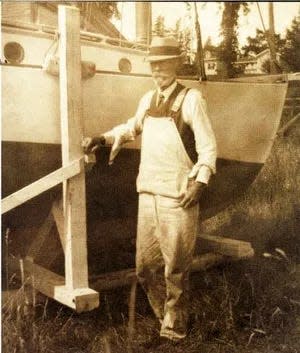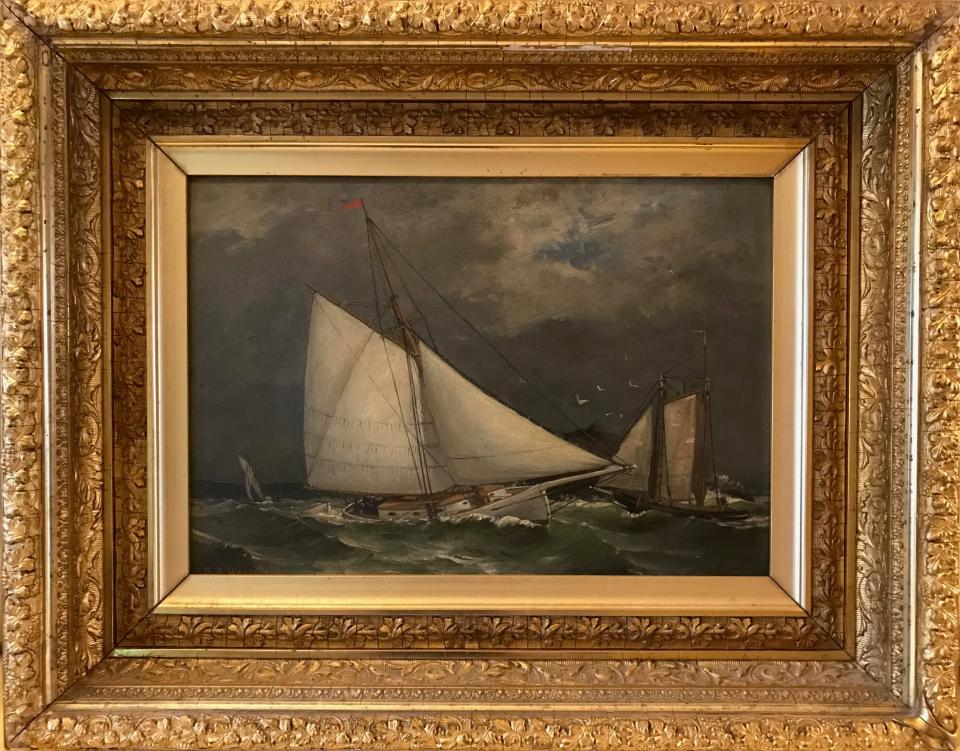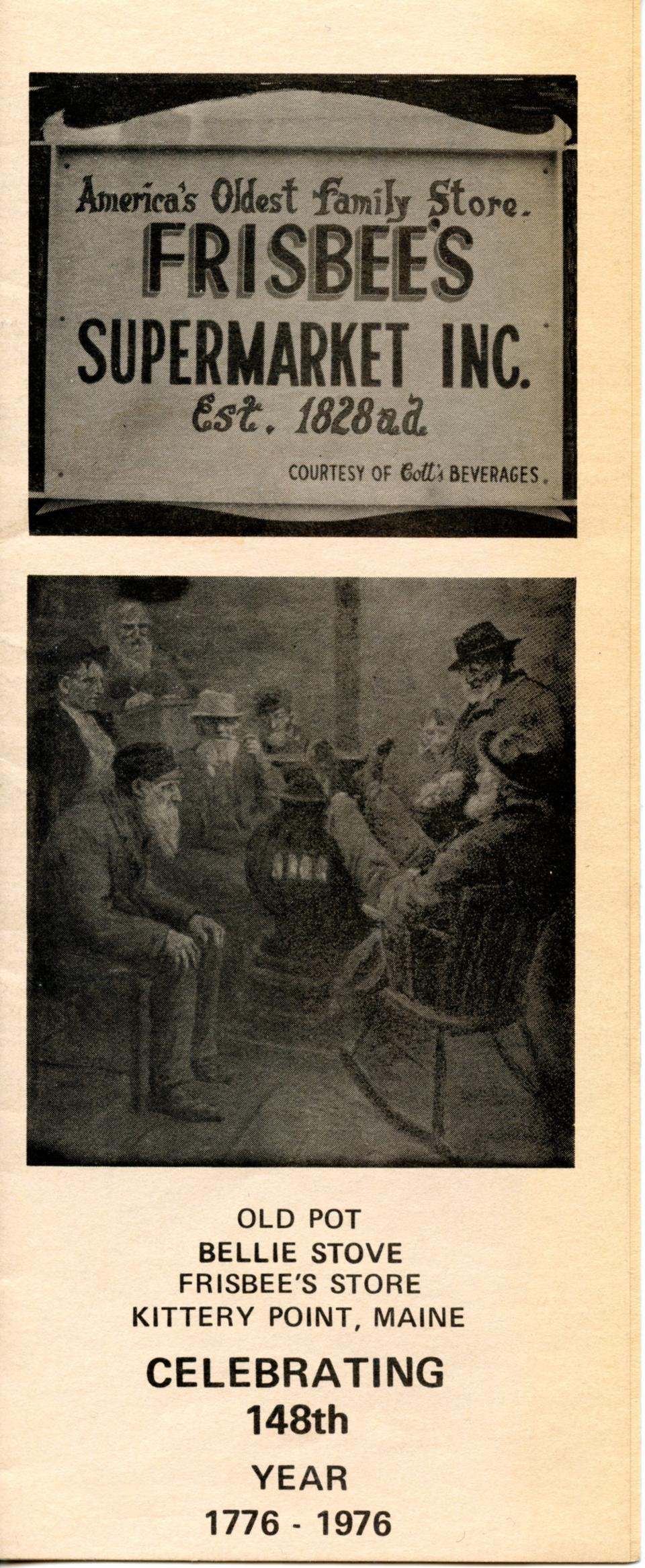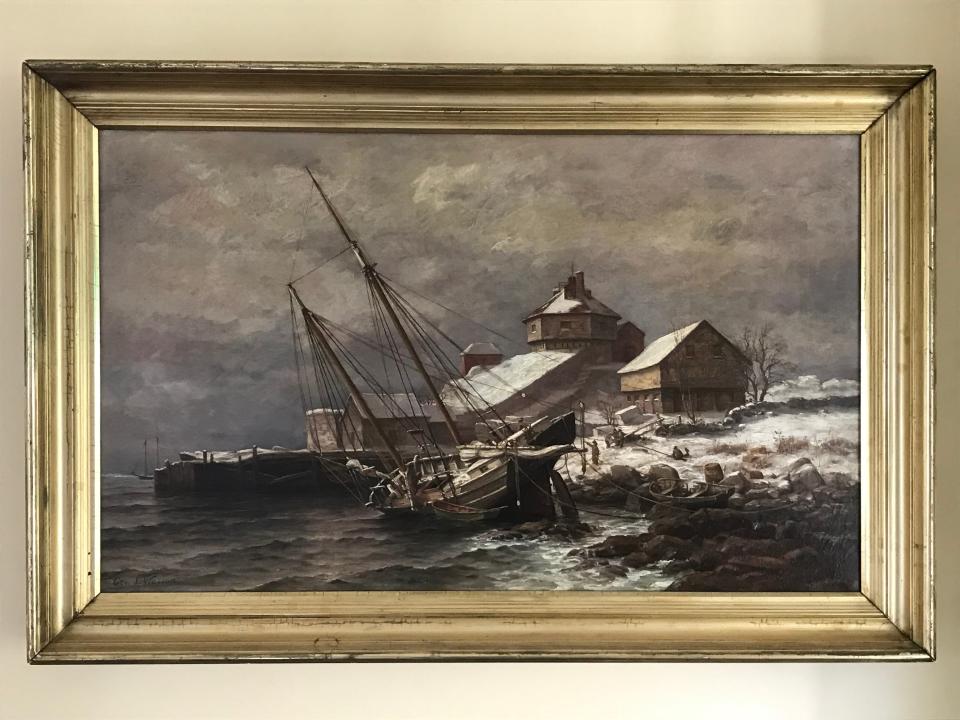At The Athenaeum: Life on the water inspired Kittery Point painter George Wasson
Lobsterman, wood carver and art aficionado David Kaselauskas is on the lookout for two notebooks he calls the "holy grail of Wasson-ship."
George S. Wasson (1855-1932) is a Kittery Point artist and author whose work is being featured in a free exhibit opening Aug. 5 in the Randall Gallery at the Portsmouth Athenaeum. Kaselauskas is the chief curator.
"The most important thing Wasson ever compiled was the dialect of Kittery Point," Kaselauskas said, referring to the 1903 book "Cap'n Simeon's Store" that featured old timers swapping tales around a pot-bellied stove.

Wasson's use of dialect earned admiration from the likes of literary giants Mark Twain and Henry James. Even though none of his books were big sellers, Wasson has earned a place in American philological history — think of him as the Henry Higgins of the Seacoast.
Wasson's notebooks were last referred to in a 1979 article in "American Speech" by University of Maine at Orono professor Jacob Bennett, who died in 2009 — not long before Kaselauskas began his pursuit of all things Wasson.
"I can look out my window and see the home Wasson built for his family," said Kaselauskas, who recently turned 80.
Another near-neighbor to Wasson was the famed carver John Haley Bellamy (1836-1914), known for his wooden eagles. The two men befriended each other and Wasson added wood carving to his list of artistic accomplishments.

The Athenaeum exhibit will include some of Wasson's carving, as well as the maritime art that he painted in his Kittery Point studio and the grand summer hotels in the area, such as the Hotel Champernowne.
"He would sit in front of the hotels over here and he would paint plein air," Kaselauskas said. "And people would come up and say, 'Oh that's beautiful.' And he would sell them right then."
His major works commanded prices of $300 to $500 in the 1890s, which Kaselauskas described as "pretty good cake at the time."
Athenaeum member Lauren Gallant and her husband Dean are assisting with the exhibit, along with Athenaeum Proprietor Wendy Lull and Curator Elizabeth Aykroyd.
Lauren, who wrote a brief biography of Wasson for the exhibit, said that Wasson’s paintings and sketchbooks are in the permanent collections of the Peabody Essex Museum, the Farnsworth Museum, the Maine Maritime Museum and the Mystic Seaport Museum.

"Wasson was a member of the St. Botolph Club, where he would have mingled with artists such as John Singer Sargent, and Augustus Saint-Gaudens," Gallant wrote. "He exhibited at the Boston Art Club along with Seacoast artists Frank Benson and Edmund Tarbell. Wasson’s marine paintings were successful, especially with sailors, because they were informed by Wasson’s intimate knowledge of boats, rigging and how boats looked and acted in the sea."
He spent his youth sailing the New England coast, and in 1885 met and married his wife Amelia Webb at Isle au Haut, Gallant wrote. In 1888, Wasson moved to Kittery Point, where he lived with his wife, Amelia and two sons, Lewis and David.

One of Wasson's paintings depicts the beaching of the Polly off Fort McClary on Dec. 7, 1890. The crew was rescued and the vehicle returned to service for 25 years.
Wasson’s last book, “Sailing Days on the Penobscot,” is considered by many to be the authoritative book on the history of sail on the Maine coast, Gallant said.
His work has continued to inspire others - not just Kaselauskas (who also took up wood carving), but Pontine Theatre's directors Marguerite Mathews and Greg Gathers.
A decade ago, the pair, who use "puppets, mimes and stagecraft to convey visions," adapted Wasson's books "Cap'n Simeon's Store" and "The Green Shay" into a stage production.
Killick Cove, as Wasson dubbed Kittery Point, is home to Cap'n Simeon's, which was based on the Frisbee Store -- run by the Frisbees from 1828 until 2009.
In his novel, Wasson wrote the "store has for generations taken the place of lecture, concert, and play; or, in fact, of any entertainment whatever during the long evenings."
The Athenaeum exhibit runs through Nov. 5.
The Portsmouth Athenaeum, 9 Market Square, is a nonprofit membership library and museum founded in 1817. Masks are required in the Randall Gallery, which is open Tuesday through Saturday, 1 to 4 p.m. For more information, call 603-431-2538 or email info@portsmouthathenaeum.org.
This article originally appeared on Portsmouth Herald: Life on the water inspired Kittery Point ME painter George Wasson

